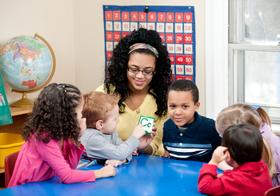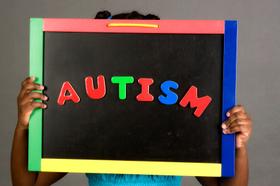Learning a language can be a difficult process. Most languages are constantly in flux, with new words regularly added to the lexicon, and old ones are dropping away. Just getting a handle on the vocabulary itself can be overwhelming. Throw into the mix the grammar rules, the punctuation nuances, and even all the slang words, and learning a language can seem as daunting a task as climbing Mount Everest barefoot and blindfolded.
Thankfully, there are increasingly more programs and schools designed to help students who wish to learn a language. Immersion schools are one such program, and they are primarily designed for elementary to high school-aged students. For example, Clark High School in Las Vegas, Nevada, offers a full immersion Chinese school for its students, as well as the Pioneer Valley Chinese Immersion Charter School in Massachusetts. For some students, full immersion in a new language is the best way to learn. For others, it is simply too difficult to learn a new language without any “references” to the language they already know. Here are the advantages and disadvantages of full immersion schools, and what to expect if your child attends one.
The advantage of immersion programs
Many people believe the best way for a student to excel in a foreign language is an immersion program. Advocates also suggest the younger the child, the better it is to send them to an immersion program, and that’s why full-immersion daycare or preschool is so popular. These can be especially useful if neither parent speaks a foreign language. Why? For better or worse, children learn far more from other kids than from an adult. Thus, if you are contemplating sending your child to an immersion school, it may be a huge advantage for fluency in a foreign language.
In fact, research indicates that in full immersion programs, children develop initial literacy in the immersion language, and then develop a complete understanding of the foreign language. However, the benefits do not stop there. In fact, the many cognitive processes that underlie the ability to read a foreign language, such as understanding the relationship between the spoken language and the written word, transfer from one language to another. In essence, research shows that a full immersion program not only teaches students a foreign language, it strengthens their understanding of their native language as well.
Here is an overview of the language immersion program at Davis School District.
Immersion schools can be an outstanding resource, provided the overall academic level is comparable to regular schools. After all, a full immersion school exposes children to cultures they may not regularly encounter on a day-to-day basis, and it develops in them an ability to make friends and connections with a variety of classmates. And, of course, full-immersion schools show students how to think globally, yet act locally – a mindset that is becoming more and more important these days.
If immersion programs are available in your area, you should take the time to visit and review the environment. If you do decide to send your child to an immersion school, there are some things for which you should be prepared.
What to expect from full immersion
Children who have some foundation in a language can really hit the fast track when attending an immersion school. But even children who do not have a foundation tend to do much better than their parents could ever hope. Most schools admit a good number of children with no prior exposure to the immersion language.
Three full days per week is typically the minimum (or five half days) for most immersion schools. Your child’s attendance also depends upon his or her knack for language, motivation, outgoing nature, and other factors. Below is what you can expect from three days per week of immersion.
First month: Everything is new, and the child will resist the change vehemently. Typically (and with some possible crying bouts), he or she may be quieter and more reserved at school and may resist playing with the other kids. Remember, this is normal behavior for any child attending a new school, even if there isn’t a new language involved. It’s a typical human reaction to change.
The second month: Your child hopefully begins to adjust to the new situation. He or she opens up and plays more with the other kids and begins to learn the basic words (“Yes,” “No,” “Maybe”). They begin to like and to gain trust in the teachers.
Third month and beyond: Your child should now be comfortable with the situation and starting to enjoy school, which really accelerates the language learning process. Remember, happy kids learn the quickest. He or she has made a few friends and looks forward to seeing them. At this stage, your child will increase his or her vocabulary much faster and start to combine words into simple sentences, perhaps even picking up some basic grammar. If you can keep up this kind of language interaction, you're really off to the races. After about one semester, he or she will be comfortable using the second language and will be quickly catching up to the peers — well on the way to speaking a foreign language, just by playing and having fun.
Reservations about immersion programs
While there are many advantages to immersion programs, there are a few things to keep in mind before you enroll your son or daughter in such a school. While the overall reasons why someone may not like an immersion program vary on a family-by-family basis (they don’t like the program, the teachers, or the facility), there are some general concerns most families share.
Of course, parents may be concerned about the child’s ability to fluently master both the immersion language and English simultaneously. The research in the United States pertaining to this concern is limited, as immersion programs are relatively new in this country. However, looking abroad to “international schools” that only teach in English, their experience sheds light on the fact that dual languages can be effectively learned, especially if the child is under 12 years of age. In this sense, the child is learning two languages, instead of a “second language.”
This video explains the importance of dual language education.
Some parents worry about "too much" exposure, meaning they want their children to soar with their new knowledge, but they also don’t want them to forget their roots. They feel that distinction may be hard to establish if their children attend an immersion school. On the other hand, many parents do feel that exposure to different cultures and languages inherently creates a depth of knowledge and understanding in their children.
In addition, as many immersion schools have smaller class sizes, the type of extracurricular activities you want for your child may not be present. If you are looking for a plethora of extracurricular activities, or large class sizes, then immersion school may not be ideal.
It is also important to ensure that the immersion program you choose has as much of a focus on the core curriculum as the language. Having solid science, math, and language arts faculty present is important in your choice of an immersion school.
Conclusion
The general rule for learning a new language seems to be "the earlier, the better." Children are sponges at earlier ages, and they seem to simply absorb an incredible amount of information at a fairly quick pace. With a younger student, you can afford to try out an immersion program and see if the reservations can be outweighed by the gain in language skills. For there are advantages and disadvantages to sending a student to an immersion school, and only you can determine what is best for your child.
Questions? Contact us on Facebook. @publicschoolreview

















































































































































